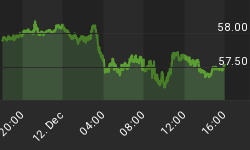China's demand for silver has its own shape and causes...
Analysts at Barclays Bank recently noted that silver imports were down 28% in the month of April year on year, writes Miguel Perez-Santalla at BullionVault.
But in an article reporting that news, the author makes it sound like demand was also off significantly for unwrought silver, for silver powder, and for jewelry manufacturing as well.
Of course, if you take a myopic view then these assumptions are correct. However, just because trade between China and the rest of the world is down does not mean that silver demand is down. What it does reveal is a decrease for external demand of silver from the Chinese market. China still remains a net importer of silver even with exports up of silver products. To me it's amazing that they need to buy silver through imports at all.
In 2011 the Chinese government incentivized the mining industry in an effort to get off of dependence for base metals from foreign countries. With China experiencing growth as high as 10.4% over the last four years and in 2011 a 9.3% growth their demand for metals and minerals for construction and industry has grown exponentially as well. China is the number two industrial consumer behind the USA. Then of course, as any wise business would do, they look for cheaper more productive forms of sourcing.
In an effort to reduce their costs they have invested in the mining and smelting sector. In doing this, according to a Thomson Reuters GFMS report for the Silver Institute, production at China's copper, lead and zinc mines were estimated to have increased by an average of 57% in 2011. This is significant to silver, because as opposed to the average world supply - where silver is mined 71% of the time as a byproduct of other metals - in China the figure is much higher at around 95%.
So logically if production of base metals increases, then production of domestic silver will increase as well.
Now, according to the ![]() US Geological Survey, China's direct mine production was up 100 metric tonnes from 2011 to 2012. The drop in April 2013 signifies around 48 tons of silver. Obviously that looks like it represents nearly 50% of the increase of supply. But mining supply continues to grow as reported by Thomson Reuters GFMS that the Ying operation completed a mill expansion in mid-2012 that increases their operating capacity by nearly 25% and other dedicated silver miners such as Minco and Silvercorp may come on board growing annual production possibly another 170 tons or more as well.
US Geological Survey, China's direct mine production was up 100 metric tonnes from 2011 to 2012. The drop in April 2013 signifies around 48 tons of silver. Obviously that looks like it represents nearly 50% of the increase of supply. But mining supply continues to grow as reported by Thomson Reuters GFMS that the Ying operation completed a mill expansion in mid-2012 that increases their operating capacity by nearly 25% and other dedicated silver miners such as Minco and Silvercorp may come on board growing annual production possibly another 170 tons or more as well.
The increased technological advances in the mining and refining fields are improving their efforts at recovery as well. The US Geological Survey estimated that at the end of 2011 China had the fifth largest reserves of silver worldwide behind Peru. Then there is no wonder that this country may become self-sufficient in silver.
Even so because of inflation and their continued growth China will remain a significant consumer. Not only will they continue to grow in the industrial, electronics and jewelry sectors but also in the retail investment sector. In 2011 they represented 8% of global net purchases for silver bars and coins. This as relative newcomers to physical bars as they only became available as of July 2009.
So the truth is they still imported 5.5 million ounces in April 2013 according to Mu Li, a commodity analyst at CPM Group. That is still a lot of metal and it is not going to disappear overnight. As China's population continues to prosper all things of value will be in demand and silver which is an important component of many products, a beautiful metal as jewelry and a great way for investment diversification for the people of China will not lose it luster anytime soon.
















